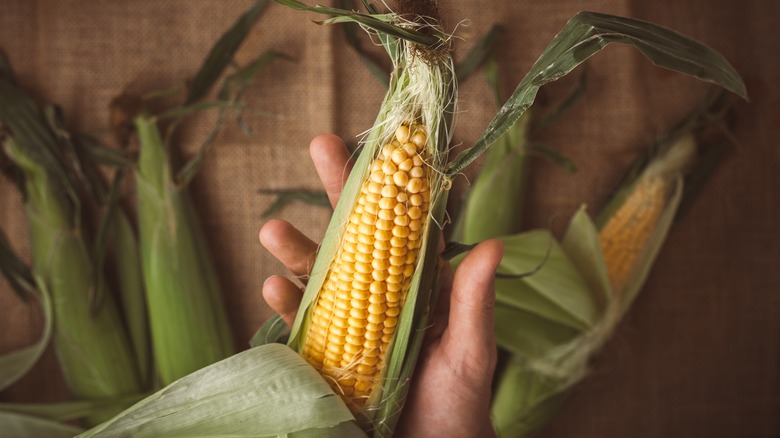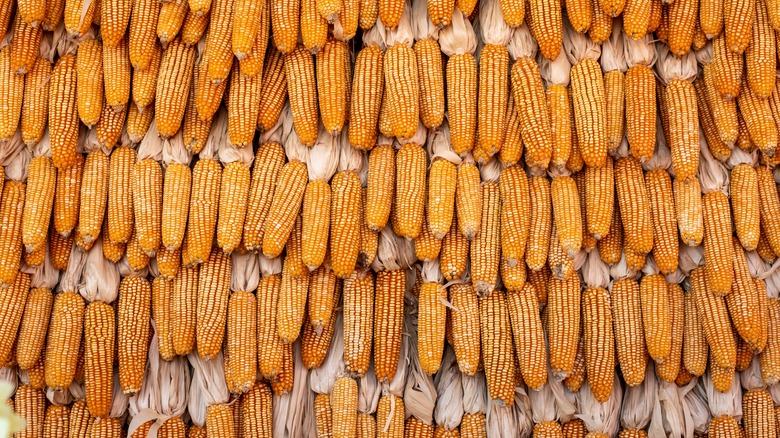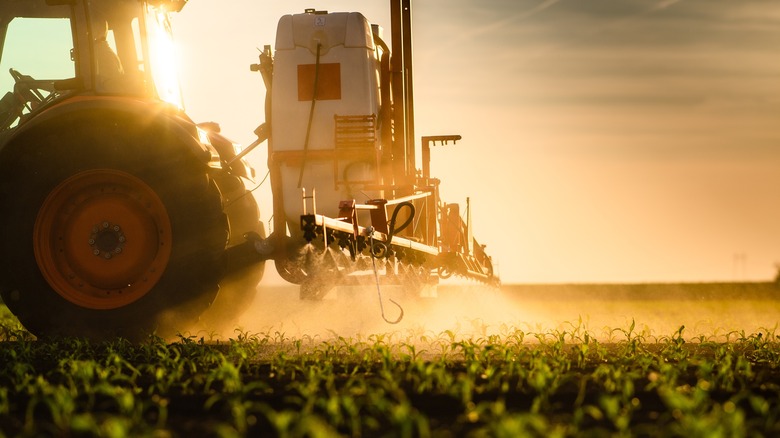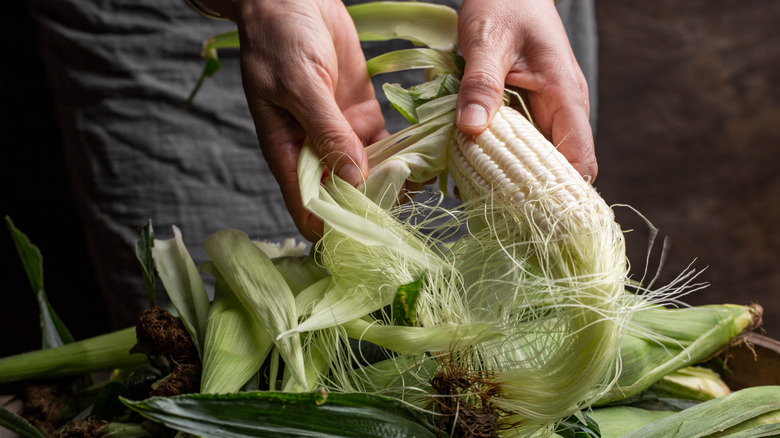You Probably Didn't Know How Complicated Corn Actually Is
Corn seems, on its surface, as basic as foodstuffs get. So, what novel information could we possibly have regarding what is literally the most common crop in the country, accounting for over 90 million acres of farmland (via USDA)? To use the ever-popular gridiron analogy, that's around 69 million football fields worth of land devoted to corn. It's not just common in the U.S. either. Britannica notes that corn grows in most climates, with a crop reaching maturity somewhere in the world almost every single month.
Corn is a massive part of our diets in more ways than you might think. Of course, you have your summer classic of buttery corn on the cob and everyone's favorite movie companion, popcorn. But Britannica also lists a variety of less overt, but even more common uses for corn, including in cooking oil, margarine, and certain types of alcohol, most notably bourbon. Despite its ubiquity in our lives, there's a lot we still don't know about corn, particularly regarding its biology and history. In fact, there's not even a real consensus as to what corn is.
Corn is both fruit and vegetable
Most sustenances fit neatly into one of the major food groups dictated by the classic food pyramid many of us grew up looking at, but corn is a bit of a rogue item. The USDA classifies corn as either a starchy vegetable or a type of grain depending on when it is harvested. If the corn is harvested at a young age when its kernels are full of liquid, it is considered a vegetable, but if it is allowed to reach full maturity, it dries out and falls into the grain category, ready to become cornmeal.
To make matters even more complex, on a purely botanical level, corn is actually a type of fruit. Popular Science explains that fruits and vegetables are differentiated by what part of the plant we eat. If what we eat comprises the plant's ovaries or reproductive tissue, we call it a fruit. Each individual kernel of corn is an ovule, and thus, it is technically a fruit. In fact, all grains belong to the fruit family caryopsis. That said, you should probably keep them out of your fruit salad.
Much more than food
We are inclined to think of corn just as food, but most of the world's corn isn't destined for the kitchen. The USDA reports that just over a third of the country's corn crop is used to make ethanol, a type of fuel added to gasoline. The government considers ethanol to be a renewable fuel source because it comes from plants, which naturally remove carbon dioxide from the air. However, Popular Science cautions that burning ethanol contributes heavily to ozone pollution, and it produces far less energy than pure gasoline.
Per the USDA, another third of the nation's corn is grown for animal feed. Less than a third is destined for human consumption, and only a small part of that will be used in food. Other uses include biodegradable packaging and the growing materials for penicillin molds and other essential medicines. Iowa Corn notes that sweet corn, the yellow stuff we eat on the cob, only accounts for 1% of the nation's total corn crop.
The first GMO?
More complicated and surprising than anything we've mentioned thus far is corn's role in human history. Its very existence is a testament to the remarkable nature of human ingenuity. Why? Well, corn is not a natural thing — human beings invented it. In "1491: New Revelations of the Americas Before Columbus," author Charles C. Mann notes that corn is incapable of reproducing on its own because its seeds (kernels) are tightly wrapped in a husk. The seeds cannot spread unless some creature with thumbs comes along and shucks the corn.
But if it is entirely reliant on humans to propagate, how could corn have evolved in the first place? It didn't, at least, not naturally. It is widely believed that Native Mexicans created the corn we know today thousands of years ago by selectively breeding varieties of a related wild grass called teosinte (via Nature). However, Charles C. Mann notes that the origins of modern corn are a point of serious contention in the scientific community, and the aforementioned theory is not universally accepted.
Some scientists believe that corn directly descends from teosinte, though inedible in its wild form, while others believe it was made by selectively breeding related species. All theories point to a common truth though — modern corn was created by Native Mexican farmers through selective breeding. It is perhaps the first and most successful instance of genetically-engineered food.



